[보험과 리스크 관리] INTELLECTUAL PROPERTY AND TECHNOLOGY RISK MANAGEMENT(영문)
 등록일 / 수정일
등록일 / 수정일 페이지 / 형식
페이지 / 형식 자료평가
자료평가 구매가격
구매가격
- 2011.03.28 / 2019.12.24
- 17페이지 /
 doc (MS워드 2003이하)
doc (MS워드 2003이하) - 평가한 분이 없습니다. (구매금액의 3%지급)
- 1,400원
최대 20페이지까지 미리보기 서비스를 제공합니다.
자료평가하면 구매금액의 3%지급!
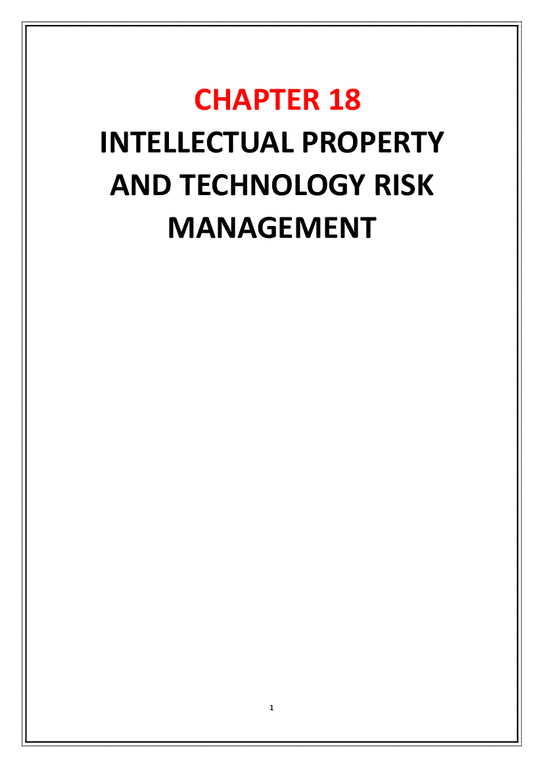 1
1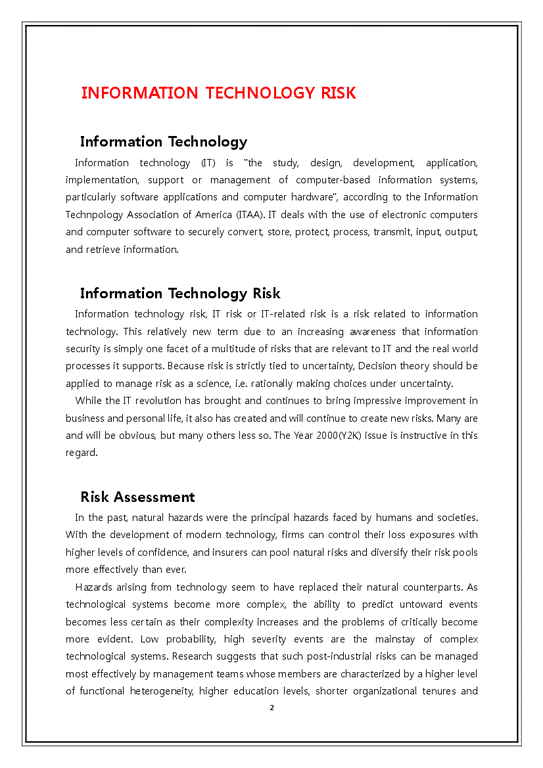 2
2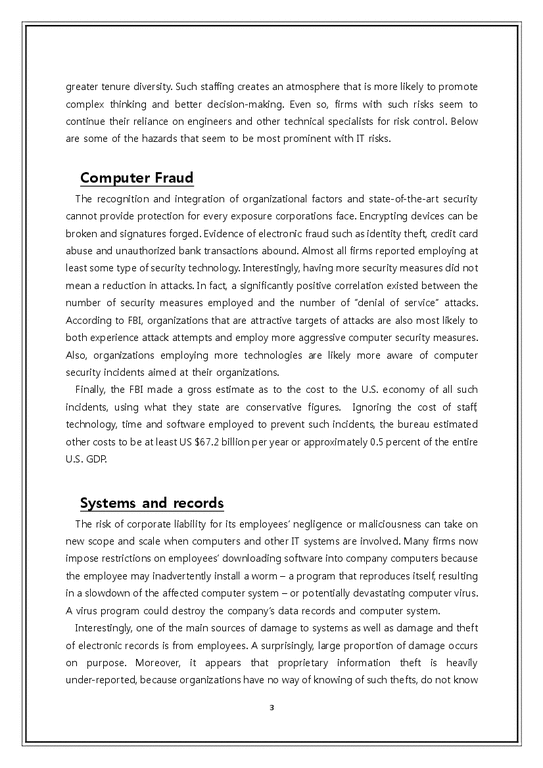 3
3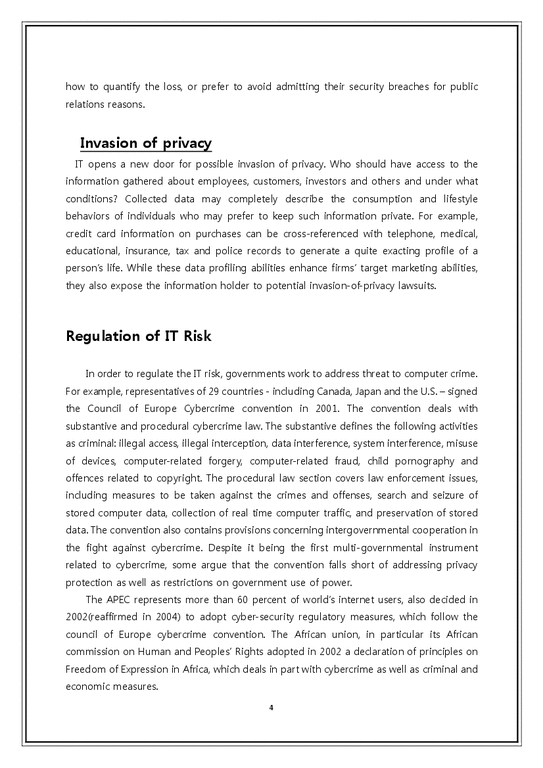 4
4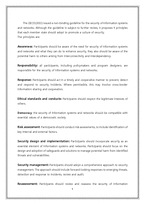 5
5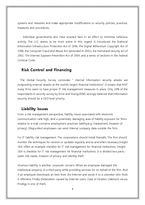 6
6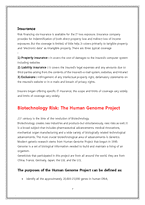 7
7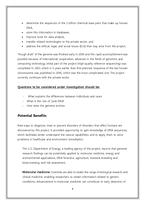 8
8 9
9 10
10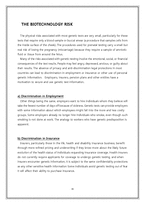 11
11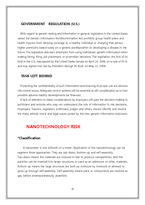 12
12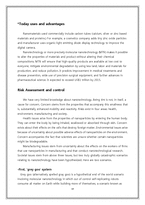 13
13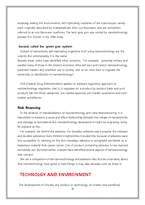 14
14 15
15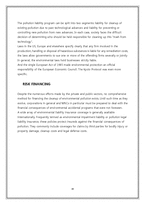 16
16 17
17
추천 연관자료
- 목차
-
1.INFORMATION TECHNOLOGY RISK
Information Technology
Information Technology Risk
Risk Assessment
Computer Fraud
Systems and records
Invasion of privacy
Regulation of IT Risk
Risk Control and Financing
Liability issues
Insurance
2.Biotechnology Risk: The Human Genome Project
The purposes of the Human Genome Project can be defined as:
Potential Benefits
LEGAL AND ETHICAL ISSUES
THE BIOTECHNOLOGY RISK
GOVERNMENT REGULATION (U.S.)
TASK LEFT BEHIND
3.NANOTECHNOLOGY RISK
*Classification
*Today uses and advantages
Risk Assessment and control
Risk financing
4.TECHNOLGY AND ENVIRONMENT
RISK ASSESSMENT AND CONTROL
RISK FINANCING
- 본문내용
-
Regulation of IT Risk
In order to regulate the IT risk, governments work to address threat to computer crime. For example, representatives of 29 countries - including Canada, Japan and the U.S. – signed the Council of Europe Cybercrime convention in 2001. The convention deals with substantive and procedural cybercrime law. The substantive defines the following activities as criminal: illegal access, illegal interception, data interference, system interference, misuse of devices, computer-related forgery, computer-related fraud, child pornography and offences related to copyright. The procedural law section covers law enforcement issues, including measures to be taken against the crimes and offenses, search and seizure of stored computer data, collection of real time computer traffic, and preservation of stored data. The convention also contains provisions concerning intergovernmental cooperation in the fight against cybercrime. Despite it being the first multi-governmental instrument related to cybercrime, some argue that the convention falls short of addressing privacy protection as well as restrictions on government use of power.
The APEC represents more than 60 percent of world’s internet users, also decided in 2002(reaffirmed in 2004) to adopt cyber-security regulatory measures, which follow the council of Europe cybercrime convention. The African union, in particular its African commission on Human and Peoples’ Rights adopted in 2002 a declaration of principles on Freedom of Expression in Africa, which deals in part with cybercrime as well as criminal and economic measures.
The OECD(2002) issued a non-binding guideline for the security of information systems and networks. Although the guideline is subject to further review, it proposes 9 principles that each member state should adopt to promote a culture of security.
The principles are:
Awareness: Participants should be aware of the need for security of information systems and networks and what they can do to enhance security, they also should be aware of the potential harm to others arising from interconnectivity and interdependency.
Responsibility: all participants, including policymakers and program designers, are responsible for the security of information systems and networks.
Response: Participants should act in a timely and cooperative manner to prevent, detect and respond to security incidents. Where permissible, this may involve cross-border information sharing and cooperation.
Ethical standards and conducts: Participants should respect the legitimate interests of others.
Democracy: the security of information systems and networks should be compatible with essential values of a democratic society.
Risk assessment: Participants should conduct risk assessments, to include identification of key internal and external factors.
Security design and implementation: Participants should incorporate security as an essential element of information systems and networks. Participants should focus on the design and adoption of safeguards and solutions to manage potential harm from identified threats and vulnerabilities.
Security management: Participants should adopt a comprehensive approach to security management. The approach should include forward-looking responses to emerging threats, detection and response to incidents, review and audit.
Reassessment: Participants should review and reassess the security of information systems and networks and make appropriate modifications to security policies, practices, measures and procedures.
Individual governments also have enacted laws in an effort to
자료평가
-
아직 평가한 내용이 없습니다.
오늘 본 자료
더보기

최근 판매 자료
- [경영정보] 모토로라의 6시그마 성공사례
- 현대가족의_변화양상,
- [노사관계론]모의교섭 절차와 방법
- [마케팅성공사례] 화장품 `미샤` 마케팅분석
- [호텔경영] 신라&메리어트 호텔의 조직 구성도
- POSCO 포스코 사회적책임완수위한 윤리경영사례분석
- 경쟁사 분석을 통한 자사의 경쟁력 방안
- CJ CGV 기업분석과 CGV 마케팅 4P,SWOT,STP전략분석및 CGV 경쟁사전략(롯데시네마,메가박스)과 비교분석 PPT레포트
- 도브 Dove 브랜드분석과 SWOT분석및 도브 마케팅과 광고전략 연구 - 도브 한국시장 전략연구 레포트
- [국제무역론] 생산요소의 국제이동
저작권 관련 사항 정보 및 게시물 내용의 진실성에 대하여 레포트샵은 보증하지 아니하며, 해당 정보 및 게시물의 저작권과 기타 법적 책임은 자료 등록자에게 있습니다. 위 정보 및 게시물 내용의 불법적 이용, 무단 전재·배포는 금지됩니다. 저작권침해, 명예훼손 등 분쟁요소 발견시 고객센터에 신고해 주시기 바랍니다.









